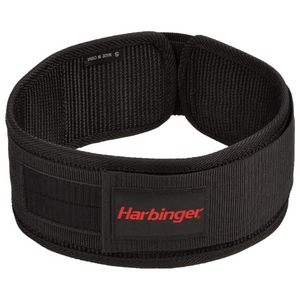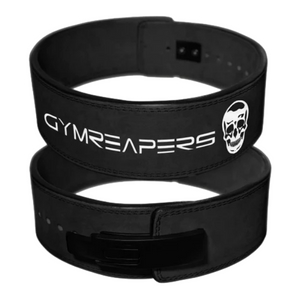5 Best Weightlifting Belts For Lifters 2024
All articles are produced independently. When you click our links for purchasing products, we earn an affiliate commission. Learn more about how we earn revenue by reading our advertise disclaimer.
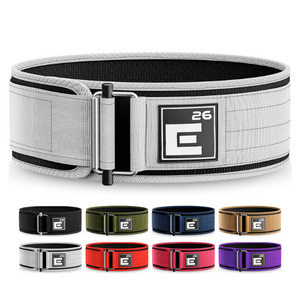
Element 26 Self Locking Weightlifting Belt
- Self-locking buckle for additional safety
- Quick-release buckle for smoother and faster transitions
- Made with 100% premium nylon
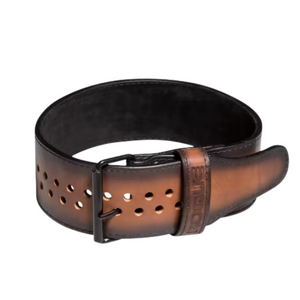
Rogue 4” Faded Lifting Belt (Pioneer)
- Made from 100% vegetable-tanned leather
- Featuring Pioneer Cut™ for better fit and sizing
- Fast shipping
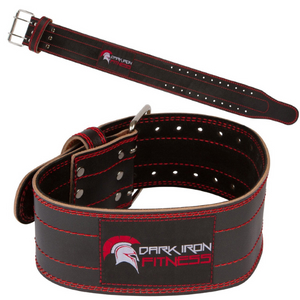
Dark Iron Fitness Weightlifting Belt
- Made from genuine cowhide leather and nickel-plated steel fasteners for high durability
- Thicker than most lifting belts on the market
- Lifetime warranty
In addition to many fitness supplements, multivitamins, and protein powders, there are some great exercise tools that can help you reach your goals more efficiently. Weightlifting belts are great fitness tools loved by bodybuilders and powerlifters looking to hit their maximum lifts and push their limits. Finding the best weightlifting belt can help prevent you from injuries and back muscle strain when lifting heavy weights.
Although not the most comfortable for every body type, weightlifting belts have their role in fitness and weightlifting. Many fitness enthusiasts begin to use them once their training becomes more advanced. .
5 Best Weightlifting Belts for Lifters On The Market In (April. 2024)
- Element 26 Self Locking Weightlifting Belt – Editor’s Choice
- Rogue 4” Faded Lifting Belt (Pioneer) – Most Potency
- Dark Iron Fitness Weightlifting Belt – Most Durable
- Harbinger 4-Inch Nylon Weightlifting Belt – Most Budget-Friendly
- Gymreapers 10MM Lever Belt – Best Variety
What Does A Weightlifting Belt Do?
What was once limited to Olympic weightlifting[1] and powerlifting has recently started making its way into recreational fitness. Weightlifting belts are being recommended to those lifting very heavy weights, especially in deadlifts[2] and squat due to their two main purposes.
Wearing a weightlifting belt during a workout helps reduce stress and strain on your lower back muscles by compressing your core, and more specifically the abdominals. This creates intra-abdominal[3] pressure that supports the skeletal structure of your lower back and lowers the compression in your back muscles.
The second role of weightlifting belts is preventing hyperextension of your spine during overhead lifts, such as the military press and overhead press. They do so by forming a strong and secure wall around the abdomen and lower back muscles, creating a connection between your rib cage and your hips.
This way, weightlifting belts limit back movement and prevent it from bending and twisting, especially in situations where a jerking move may be helpful to lift a heavier load. Weightlifting belts also make you more aware of your form and help you feel more secure during very heavy lifts.
Benefits Of Weightlifting Belts
Weightlifting belts help reduce the pressure and stress on your lower back muscles and bones by creating intra-abdominal pressure. They also prevent hyperextension of your spine during overhead lifts where keeping a strong posture is crucial to protect yourself from injury and be able to progress with your weight load.
Many people report feeling safer and more likely to lift heavier weights when wearing the belt as it gives them a sense of stability and protection. Beginners might use the belt to help them learn how to properly squeeze and activate their core muscles. Many people believe that your core only consists of your abs, but it actually includes your entire lower torso, from your back muscles to your obliques and abs.
Research[4] points out their benefits with heavy lifts such as squats, deadlifts, and overhead presses, which all require a strong core and a stable posture to be done correctly. All of these exercises are compound[5] movements, meaning they involve multiple muscle groups and joints in order to be performed. That’s why squats are actually whole-body exercises even though the focus is on your legs and glutes.
5 Best Weightlifting Belt In 2024
Element 26 Self Locking Weightlifting Belt
Element 26 created a self-locking weightlifting belt that stays in place and helps you feel safer during workouts.
- Self-locking buckle for additional safety
- Quick-release buckle for smoother and faster transitions
- Made with 100% premium nylon
- Some people report it wears out fast
Weightlifting belts are sometimes hard to adjust and keep in place. This self-locking lifting belt from Element 26 eliminates that problem with its self-locking buckle that’s also easy and quick to release so you don’t have to worry when you’re switching between exercises.
It comes in six sizes and in order to choose the right fit for you, the brand recommends you measure around your navel. If you happen to be between sizes, they recommend you size down. This will ensure proper intra-abdominal pressure and stability without being too tight or not tight enough.
This lifting belt is made from 100% durable nylon and it comes with velcro straps, which some users report wear out quite fast. With that being said, Element 26 offers a lifetime warranty so you can easily replace your worn-out nylon velcro belt with a new one.
Rogue 4” Faded Lifting Belt
Rogue 4” Faded Lifting Belt from Pioneer is perfect for those who are serious bodybuilders and powerlifters as it offers the best buckle and safety features for very heavy weights.
- Made from 100% vegetable-tanned leather
- Featuring Pioneer Cut™ for better fit and sizing
- Fast shipping
- Quite expensive
Rogue 4” Faded Lifting Belt from Pioneer is one of the best vegan leather weightlifting belts that come with a patented Pioneer Cut™ buckle design. This provides better sizing and fits as it features two offsetting lines of holes instead of just one.
The result is better precision and a more comfortable fit as it allows lifters to tighten the belt in 0.5” increments. This makes it one of the best weightlifting belts for women as they tend to be smaller lifters and often have problems with finding the right fit.
The faded look on this vegan leather belt gives it a unique design, plus customers report great quality. It comes in five sizes and runs large, so their recommendation is to size down, especially if you’re in between sizes and you’re not sure about which size to choose.
This is one of the most expensive lifting belts on the market, however, so it’s a true investment for those who take strength training very seriously.
Dark Iron Fitness Weightlifting Belt
Dark Iron Fitness makes one of the best weightlifting belts on the market with highly durable materials that won’t wear out.
- Made from genuine cowhide leather and nickel-plated steel fasteners for high durability
- Thicker than most lifting belts on the market
- Lifetime warranty
- Might be too thick for smaller frames
Dark Iron Fitness Weightlifting Belt is made from 100% genuine leather and nylon-plated steel fasteners that ensure high durability and make lifting a breeze. Even though it’s made from leather and is on the thicker side, it’s actually pretty soft and comfortable so it won’t cause chafing.
Advertised as a lifting belt for men and women, this durable leather belt comes in five sizes and two colors (black and white) so it’s highly unlikely you won’t find your fit. It’s fairly priced when compared to other lifting belts on the market so it won’t break your bank. It also comes with a lifetime warranty, so in case it gets damaged or worn out pretty quickly, you can easily get a replacement.
Harbinger 4-Inch Nylon Weightlifting Belt
Harbinger’s 4” Nylon Weightlifting belt is one of the most affordable on the market and it’s a great starting point for beginners.
- Made from durable nylon
- Affordable
- Steel buckle
- Only four different sizes so might not fit everyone
One of the most affordable nylon belts, Harbinger’s 4” lifting belt is great for anyone who’s just starting out and doesn’t want to spend a fortune. It’s decently sized and not too thick, so users report it’s great for small lifters.
It only comes in four different sizes so it might be hard to find the right fit, but the steel buckle provides excellent tightness and support, without leaving you feeling like you’re using something cheap. Users report how the velcro part of the belt covers a wide enough area and really doesn’t come off even during very heavy lifts.
Gymreapers 10MM Lever Belt
Gymreapers 10mm Lever Belt is USPA-approved, making it the perfect powerlifting belt for everyone who is a competitive powerlifter. An USPA approval rating qualifies the weightlifting belt to be used in formal powerlifting competitions.
- Comes in six different sizes and five colors
- United States Powerlifting Association (USPA) approved
- Made from premium leather
- Expensive
- Only 1-year warranty
Gymreapers 10mm Lever Belt is one of the best weightlifting belts on the market and its USPA approved. Put through rigorous testing, this powerlifting belt features an easy-to-use lever that helps you adjust it to your fit and size. It comes in six sizes so combined with the lever, it’s almost impossible to get the wrong fit.
It’s made with high-quality leather and has smooth edges and stitching so it doesn’t cause chafing and irritation. The belt is on the pricier side and they only offer one year warranty so it’s really meant for serious lifters who know how to best take care of it and extend its lifetime.
It’s definitely one of the best leather belts out there but is designed for more advanced lifters rather than beginners or those who use it only recreationally on leg days.
How To Choose The Best Lifting Belt?
Choosing the best weight lifting belt isn’t always the easiest task, especially since you can’t try it out in the gym. However, there are some important features all the best lifting belts should have.
- High-quality material – whether you’re looking at nylon or a leather belt, make sure that you’re choosing the highest quality material possible. If you can’t find this information on the brand’s website, read through the reviews as people will most likely comment if the quality is simply not on point. Most weightlifting belts are expensive and you don’t want to spend your money on a belt that will literally wear itself out after only a few lifting sessions.
- Lifetime warranty – Even if your belt is made out of the highest quality materials, there is always a chance it will wear out quickly. Brands that offer lifetime warranties stand behind their weightlifting belts and offer a replacement in case of damage or wear and tear.
- Adjustable buckle – whether your lifting belt has a stainless steel buckle or a cheaper variation, the more important aspect is its adjustability. Not everyone is built the same and being able to customize and adjust the buckle to best fit your waist is crucial to getting the optimal support[6] you need to lift heavy weights. Without adequate tightness and support, you’re risking injury and muscle strain.
- Variable sizing – brands that only offer three to four sizes won’t fit everyone, especially if you’re in between sizes yourself. Many brands now offer five or six different sizes so they are definitely a better option as the chances of finding the right fit increase significantly.
- Approval – if you’re planning to use your weightlifting belt in a competition, check the lifting belt requirements and whether the brand you choose has the organization’s or association’s seal of approval. These organizations have rigorous measures when it comes to fitness tools and equipment, so before you spend a fortune on a powerlifting belt, make sure it’s USPA-approved.
How To Tested The Weightlifting Belts?
First and foremost, you need to measure your waist and see which size would even fit you. Measure around your navel and not where your pant line is, and carefully follow the guide you see on the brand’s website. If you’re shopping online, be prepared to return the weight belt and get a new one, but if you found the one you like in a store, try it on and see how it fits you.
Even though you can’t really test it out in the gym before buying, put it on, tighten it up, and try performing a bodyweight squat or deadlift and see how it feels. It’s probably going to feel a bit uncomfortable at the very beginning, but you’ll easily get used to it once you feel how much safer and stable you’ll be during your heaviest repetitions.
When you’re trying it out in the gym for the first time, it shouldn’t be moving. So, make sure to secure it and tighten it just enough so you feel supported but not squished. Even though it’s a new feeling, it should feel comfortable.
Start with an easy weight and do a series of squats, deadlifts, and overhead presses. If it feels good, increase the weight. As you’re nearing serious weights, you’ll notice the power of the belt. Breathe properly, adjust your form, and make sure there is no pain or too much pressure on your abdomen.
While wearing the weightlifting belt, never relax your core muscles. The belt can never replace the strength of your own muscles, its goal is only to support you and help you utilize them to the best of your ability.
Final Thought
The best weightlifting belts can support your heavy lifting and help push you in your fitness journey. Many competitors like to use powerlifting belts as they help them through competitions where the goal is to lift as heavy as you possibly can.
When you’re only working out on your own, the need for a weight lifting belt isn’t so prominent and you may be able to go without it. In the end, it’s not a necessity for everyone, but a weightlifting belt can help make it easier to push your physical limits and feel more supported while doing so. Just remember to pair it with a healthy diet and you’ll be hitting personal records in no time.
Frequently Asked Questions
Not everyone needs a weightlifting belt. If you’re a beginner, it might help you learn how to activate your core muscles, and if you’re an advanced lifter, you might use it to help you progress onto heavier weights. The best weightlifting belt will only support you, but it shouldn’t be used if the weight you’re trying to lift is too much for your body frame.
Beginners could absolutely use a lifting belt, but they should do so under strict guidance from a coach or trainer. Weightlifting belts could be beneficial to help you learn how to properly engage your entire core, but they can also be detrimental to one’s muscle-building journey. Beginners can easily get used to the intra-abdominal pressure and safety the lifting belt provides, making it hard for them to work out without using it in every exercise.
A weightlifting belt is usually used in exercises that require you to lift or push very heavy weights such as during squats, deadlifts, overhead presses, and other heavy exercises like pushing the sled and doing battle ropes.
Yes, you can squat without a belt, but if you’re lifting heavier and heavier weights, you might want to consider getting one to help stabilize you and prevent any potential injury that might occur.
Leather and nylon weight lifting belts seem to be the best and most durable on the market. Double-pronged buckles provide a better fit and make the entire lifting belt more durable. Velcro belts are often thinner and don’t provide the same support.
A weightlifting belt should ideally sit above your hip bones and feel secure around your core muscles. Once you secure it, flex your abs against the rigid belt to brace and create the wanted tension. You need to always keep the tension and really use your belt, not just wear it.
+ 6 sources
Health Canal avoids using tertiary references. We have strict sourcing guidelines and rely on peer-reviewed studies, academic researches from medical associations and institutions. To ensure the accuracy of articles in Health Canal, you can read more about the editorial process here
- HELLAND, C., HOLE, E., IVERSEN, E., OLSSON, M.C., SEYNNES, O., SOLBERG, P.A. and PAULSEN, G. (2017). Training Strategies to Improve Muscle Power. Medicine & Science in Sports & Exercise, [online] 49(4), pp.736–745. doi:10.1249/mss.0000000000001145.
- Fong, S.S.M., Chung, L.M.Y., Gao, Y., Lee, J.C.W., Chang, T.C. and Ma, A.W.W. (2022). The influence of weightlifting belts and wrist straps on deadlift kinematics, time to complete a deadlift and rating of perceived exertion in male recreational weightlifters. Medicine, [online] 101(7), p.e28918. doi:10.1097/md.0000000000028918.
- Blazek, D., Stastny, P., Maszczyk, A., Krawczyk, M., Matykiewicz, P. and Petr, M. (2019). Systematic review of intra-abdominal and intrathoracic pressures initiated by the Valsalva manoeuvre during high-intensity resistance exercises. Biology of Sport, [online] 36(4), pp.373–386. doi:10.5114/biolsport.2019.88759.
- Lander (2019). The effectiveness of weight-belts during the squat exercise. Medicine and science in sports and exercise, [online] 22(1). Available at: https://pubmed.ncbi.nlm.nih.gov/2304406/
- Paoli, A., Gentil, P., Moro, T., Marcolin, G. and Bianco, A. (2017). Resistance Training with Single vs. Multi-joint Exercises at Equal Total Load Volume: Effects on Body Composition, Cardiorespiratory Fitness, and Muscle Strength. Frontiers in Physiology, [online] 8. doi:10.3389/fphys.2017.01105.
- Zink (2015). The effects of a weight belt on trunk and leg muscle activity and joint kinematics during the squat exercise. Journal of strength and conditioning research, [online] 15(2). Available at: https://pubmed.ncbi.nlm.nih.gov/11710410/

